e.max: Bond or Cement?
Lithium disilicate has taken the dental profession by storm — and Ivoclar to new heights of profitability. The company that released Empress to us so many years ago, and saw it proliferated by every manufacturer who could deconstruct it, was much more careful to guard its product when Empress II (the original name of the lithium disilicate that we know today as e.max) was introduced. It has also been named Empress Eris.
I love this stuff. Lithium disilicate has enabled us to have an all-ceramic crown material that works reliably in almost every situation. While it originally was less than perfect for many esthetic applications, the technical modifications made over the past few years have given us a material that can be used with esthetic confidence in both posterior and anterior teeth. The one remaining application in which it struggles to displace other materials entirely is when a skinny occlusal thickness is required, such as second molars in cases where a cant is being corrected. Fortunately, zirconia has appeared to fill that need, although I’ve seen some unusual esthetic results in cases that are not a bright and light shade. That being said, pretty much everyone I know in dentistry uses e.max lithium disilicate in their practice.
I get to spend some time at our Anterior Restorative Dentistry workshop discussing the history and current science around bonding. In that regard, there is one question that never fails to come up quickly and often in that workshop and in others as well: “Should I seat all of my e.max restorations by bonding them in?”
Before we investigate that, let’s limit our conversation to lithium disilicate because that’s the material for which the question is asked. There are two e.max products that are lithium disilicate: e.max Press and e.max CAD.
e.max Press
Full contour, can be cut back for stacking, can be pressed as a core for stacking with e.max Ceram.
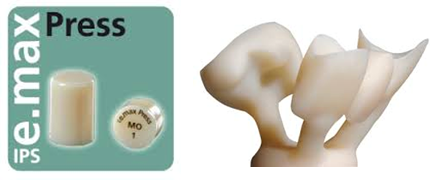
e.max CAD
Milled, conditioned, can be cut back for stacking with e.max Ceram.
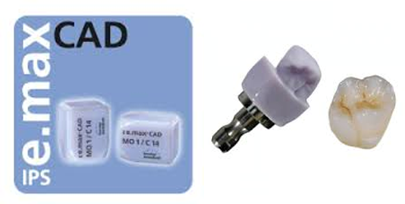
e.max ZirPress, e.max Ceram, and e.max ZirCAD all share the e.max name, but they are not lithium disilicate.
e.max ZirPress
Fluorapetite glass ceramic ingot that can be pressed over a ZirCAD framework. It can then be cut back for stacking with e.max Ceram. That’s three kinds of e.max in one restoration.
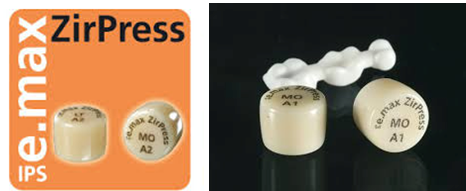
e.max Ceram
Nanofluorapatite layering ceramic powder that can be applied over any of the e.max materials.
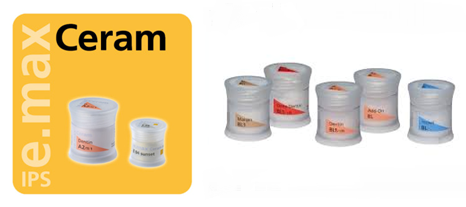
e.max ZirCAD
Yttrium-stabilized zirconium oxide block that is milled and then sintered. The milled ZirCAD is 20% larger than the resulting sintered product. It can then be covered with e.max ZirPress and/or e.max Ceram.
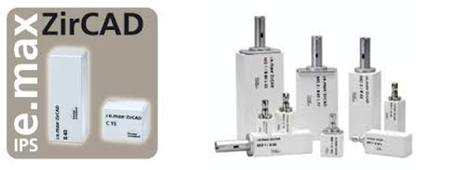
If you find all of this confusing, you’re not alone. How many of us can name all the ingredients in all the e.max products? (For the record, it’s the yttrium stabilizer that most people forget.)
So now that we’re crystal clear, we can discuss the question at hand: Should I cement or bond my e.max (lithium disilicate) restorations?
First, can we all agree that all partial-coverage e.max restorations will be bonded? Partial-coverage restorations require a connection to the tooth to have adequate strength. Crowns are where the option appears and the questions begin.
If there is a difference in strength between the two methods of connecting to the tooth, I’m betting most of us would opt for more strength, yes? When Dr. Bob Winter and I visited Ivoclar’s U.S. headquarters a few years ago, they showed us some impressive data regarding strength. They also showed us some very loud tests they use to measure that strength. Bonded on e.max, lithium disilicate restorations tested stronger. Case closed?
Just because you can make something stronger, does it mean you have to? My favorite analogy is hanging up a picture. I’m betting your art is not falling off the walls, yet you could put more nails there to make it stronger. Sometimes, enough is good enough. If the strength is adequate for what the restoration will be asked to do, is it necessary to give it more strength? My answer is: If you want to.
I believe, and we teach this here at Spear, that lithium disilicate crowns can be cemented or bonded. The preparation and the patient drive your decision on which to do.
- In the case of short prep, if there is too much taper, get the help of adhesive materials to attach it.
- A bruxing patient who has destroyed all of your excellent dentistry in the past: same thought.
- Adequate resistance and retention form, a patient who only eats and talks with his teeth: Cement it if you want to.
I’ve referenced a couple of fairly recent articles that show us one nail can and does keep the art on the wall. In-vivo use of cementation does not change the predictability of the lithium disilicate restoration.
Relish the freedom to do what feels right at the time and what works best in your hands.
References
- Gehrt M, Wolfart S, Rafai N, Reich S, Edelhoff D. (2013). Clinical results of lithium-disilicate crowns after up to 9 years of service. Clinical Oral Investigations, 17(1), 275–284.
- Kern M, Sasse M, Wolfart S. (2012). Ten-year outcome of three-unit fixed dental prostheses made from monolithic lithium disilicate ceramic. The Journal of the American Dental Association, 143(3), 234–240.
SPEAR campus
Hands-On Learning in Spear Workshops
With enhanced safety and sterilization measures in place, the Spear Campus is now reopened for hands-on clinical CE workshops. As you consider a trip to Scottsdale, please visit our campus page for more details, including information on instructors, CE curricula and dates that will work for your schedule.

By: Gary DeWood
Date: September 21, 2017
Featured Digest articles
Insights and advice from Spear Faculty and industry experts


